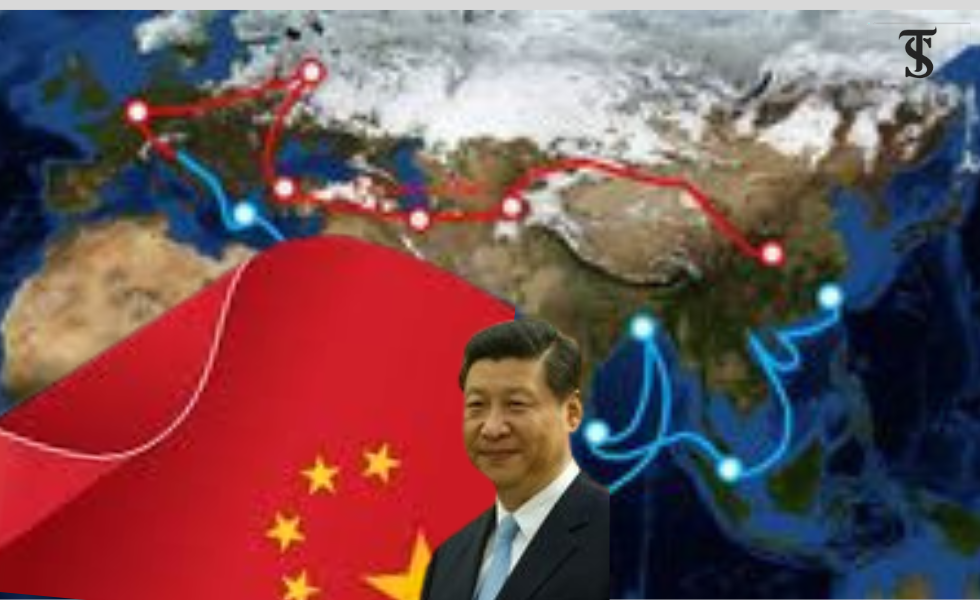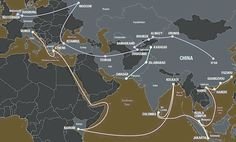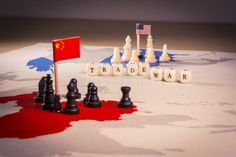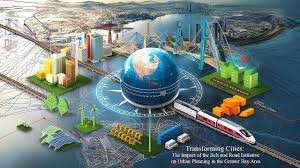The Belt and Road Initiative: Development Aid or Debt Diplomacy?

- The Belt and Road Initiative (BRI) aims to bridge the infrastructure gap between developed and developing countries, boosting economic growth in underdeveloped regions.
- Critics argue that the BRI is a tool for Chinese dominance, but it provides mutual benefits by enhancing trade, infrastructure, and economic opportunities for partner nations.
- While some view the BRI as a form of exploitation, it is a strategic development initiative that fosters win-win outcomes for both China and participating countries.
The Belt and Road Initiative is a globalization project of infrastructural development that was approved by the Chinese government in 2013. It aims at making and undertaking giant investments and developments beyond 70 countries with a special emphasis on assisting the less developed countries to harness abundance of natural resources that they possess for their own benefit and make china reap cheaper and more reliable sources of natural resources at the same time. The Chinese government refers to it as a quest to improve the connectivity of the region to embrace a better future” while other analysts view it as a way of achieving dominion over international matters by establishing a form of a trading block centered in China.

Speaking of this in more details, I will try to state that the given concept can be regarded as a combination of both the above indicated points of view, and the Chinese initiative, again, is beneficial for both the country itself and the states that become its partners within the framework of the Belt and Road Initiative. I will also try to refute the claim that China crawls for resources in the poorer nations while the latter has virtually nothing to gain in their economies.
Belt and Road Initiative tries to fill the infrastructure deficit between the developed and the developing nations in order to enhance the economic growth of the developing nations. This initiative would benefit poor countries which have large endowments of resources but lack necessary infrastructure that would enable them to extract these resources. This initiative makes it stand out from other projects that seek to help underdeveloped countries by offering not the much needed resources that this country requires at a certain time but rather giving this country the means through which it can gain these resources on its own to spur the economy and little rely on aid. The project intends to locate its new stations on important ancient trade arteries that linked China with the west like the north’s Silk Road established by Marco Polo and the maritime trade voyages of Zheng He in the south.
Surprisingly, the Belt and Road Initiative better known as BRI is not well understood and for one reason or the other it is either being misrepresented or misunderstood particularly when viewed by some of the Western powers.
The development of this project will be highly rewarding for the countries with weak economical indicators but with the favorable prospects due to which these countries could not progress as they should have because of the historical mistakes, or political and social instabilities which led to the economical stagnation. Most of these countries invest huge proportions of their budgets in importing natural resources that are local but cannot be processed because the relevant infrastructural development has not been put into place.
These resources shall be extracted, transported and the general infrastructures that shall be developed within these countries shall include the developments that shall seek to optimize on the energy issue within these countries that shall enable industrialization. The project will also let these nations venture their natural resources for their domestic uses as well as offer them the trade and transport facilities to export these resources which in turn will enhance the improvement of these nations’ economies.

In this way, China wants to achieve two major objectives. On a basic level, to secure for itself a steady and cheap access to primary products originating in the Third World. This is achieved by making sure that when the development of infrastructural facilities that include natural resources mining is done, then when the natural resources are processed and exported to the outside world, the total cost is relatively low to China. One advantage of this is uncertainty in politics currently facing china’s current market of this natural resource. These states have in the past tried to manipulate the prices of the oil they export and as the Chinese well know, they rely on the Middle East for most of their oil needs. This status quo and the trade war with the United States can also be seen as a threat because the US could cut off Chinese’s oil sources and take out the whole of their economy and thus make China collapse.
It can make its economy strong by opening new link and passages with the counties that are either friendly to it or which are under its influence so that any outside force cannot interrupt the supply of resources. The second major objective of this process is to establish a system of efficient supply and sales chains of material and human resources with China as their core. This way China can ensure an even higher speed of supplied exported goods and offer even greater encouragement for foreign corporations to invest in China as the pool of cheap labor, one of the most attractive Chinese assets in the last few decades of the economical development, gradually depletes due to the improving standard of living.
It provides the government with an opportunity to manage the economy by responding to complaints that many critics of the belt and road initiative have made, which assert that China is only interested in using the developed short foreign nations for their resources while these nations seem to get nothing in return. These critics even go so far as to liken this project to the British colonization in as much as while the British were putting up railways etc. in colonies such as India, most of the money that flowed in from these investments went back to Britain and the colonies which provided the raw materials became poorer.
However, I shall be submitting that these two situations are not in any way similar to the extent that one cannot begin to compare them and that China’s goals in this area are not in any way imperialistic. While Britain aimed to dominate its colonies, China aims at helping underdeveloped nations to enhance their economy and at the same time profits. China offers concessional financing to these countries for their infrastructure development the interest rate which is charged is almost negligible and can be as low as 1%.
What can be inferred here is that the monetary revenues is not a total gain for China in the investments on these countries. Surprisingly, the Belt and Road Initiative better known as BRI is not well understood and for one reason or the other it is either being misrepresented or misunderstood particularly when viewed by some of the Western powers. They typically aim for arousing fear towards the BRI as being for domination or as a technique in which China would get other countries into a cycle of debt and obliging them to be under China’s control at the expense of the latter’s sovereignty. Nevertheless, this notion is rather encouraged by the propaganda from the Western countries as the rise of China’s status to the leaders of the economy of the world is rather regarded as a threat for the Western countries regarding geopolitical and economic supremacy.

Nevertheless, when analyzing the BRI with reference to the two aspects, it is evident that the venture has tremendously profitable effects for both the Chinese and all the participating countries. These are the countries that poorly developed economy, or in some cases, even observe the tendencies toward its stagnation, and, therefore, the absence of the minimum prerequisites for economic growth. Regarding its scopes and resources the BRI mainly concentrates to invest in the infrastructures like roads, railways, port and Energy sector which fuels the economy. But such investments create demands for products and enhance the local economy, in the same manner, it also widens to the access of other countries and in due time creates the demand for export and foreign direct investments.
In addition to this, the BRI helps to lure such nations into the world economy system and provide them with choices they would ab initiate on their own. The fact that these countries can be seen as capable of climbing up from the phase of economic stagnation and reaching for an economically sustainable rate of growth is priceless. Thus, the growth of infrastructure and levels of economic development contributes to improving the standard of living, reducing the incidence of poverty, and, in the broad sense of the word, socio-economic growth. In this regard, one may diagnose the BRI as the partnership in which China gets strategic gains while the other nations are the happy beneficiaries of China’s favorable influence.
Regarding this issue, the BRI wants to introduce regulation for development and cooperation, which forms a win-win situation at least instead of the ‘lose-lose’ situation as some critics have described it. Therefore, based on this understanding of defining the Belt and Road Initiative, it is not a form of exploitation but a vast development scheme that in principle has win-win effects.
Rabia Rehan
The author is a student of BS Strategic Studies at the National Defence University having keen interest in global development strategies and international relations






Hi my family member I want to say that this post is awesome nice written and come with approximately all significant infos I would like to peer extra posts like this
Program iz I am truly thankful to the owner of this web site who has shared this fantastic piece of writing at at this place.